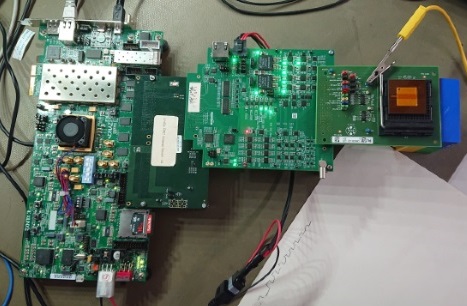To exploit the potential of diffraction-limited synchrotron rings, a new category of X-ray imagers is needed, capable to faster, continuous operation. Such images are also needed to exploit the potential of Free Electron Lasers considering continuous wave operation.
The CORDIA project aims to develop an X-ray imager capable of continuous operation at a frame rate of ~150 kHz.
The imager aims to be capable of photon discrimination at 12 keV (when coupled to a Silicon sensor), but also compatible with high-Z sensors for higher energies.
Further goals include a dynamic range of a few k-photons, in a limited pixel pitch (~110um).
The readout ASIC architecture is based on a pipelined structure,
- including an adaptive-gain charge-integrator, to extend the dynamic range
- a battery of on-chip ADCs, embedded in the pixel array
- and a fast readout system, using the principle of the GWT-CC developed by NIKEF for Timepix4

Sets of sample/hold cells allow the analog front end to integrate the charge of an an image, while the former image is sequentially digitized by the SAR (11bit) ADC and sequentially streamed out.
Circuits are organized in a “superpixel” modular structure that can be replicated in a 2D array.
Prototypes including circuit blocks and circuit chains have been manufactured in TSMC65nm technology.
We plan to develop the imager it in two phases, first targeting the continuous readout scheme and the frame rate target, and later aiming at extending dynamic range and minimizing blind areas.






